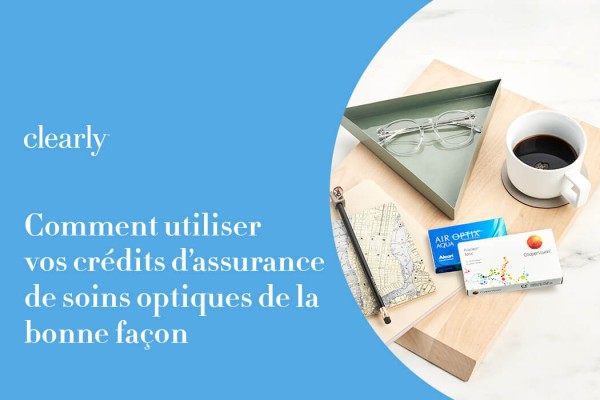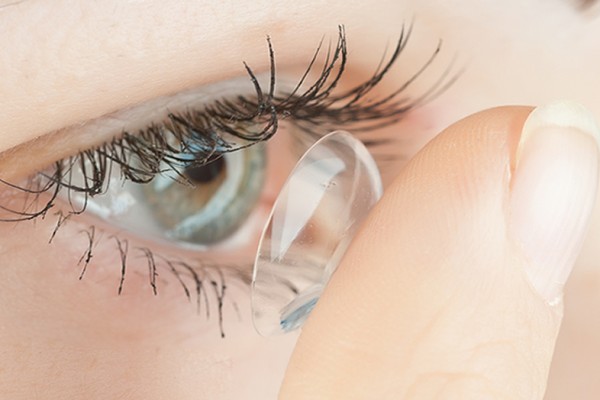This post is also available in:
![]() English (Anglais)
English (Anglais)
Your eye doctor may recommend that you try progressive glasses if you need different glasses for near vision (such as reading) and distance vision. With progressives, there’s no need to switch between pairs because these lenses provide vision correction at all distances (near, intermediate, and far) within one lens.
Progressive glasses are a revolutionary way to simplify your eyewear routine (no need to constantly carry multiple pairs!). However, it’s worth noting that adapting to a new multifocal prescription and progressive lens design can take a bit of time initially.
Read on to find out how to adapt to your new progressives like a pro, and you’ll soon be wearing one pair of glasses for all your vision needs.
- How long does it take to adjust to progressive glasses?
- Two things you might notice when adjusting to progressive eyeglasses
- Tips for reading with your new progressive glasses
- The science behind wearing progressives: How they work
- Progressive lenses vs bifocals: The difference
- Ready to find your progressive glasses?
How long does it take to adjust to progressive glasses?

@themintedmama
Adjusting to progressive glasses takes a bit of time and most people need anywhere between a few days to two weeks. This is the case even if you’ve worn progressives or bifocals in the past.
Remember that every eye is different, and every person is unique. Try to be patient with yourself during this time and focus on progress.
Here are a few things you can do to shorten the adjustment period:
- Avoid wearing your old pair of glasses and wear your new frames as much as you can
- Start by wearing them during all waking hours of the day to adjust (for example, around the house and while working)
- Once you’re more comfortable, wear them while driving
If it’s been a few weeks and you’re still having trouble adjusting to your new glasses, come back and see us in store or contact us by giving us a call at 1-866-414-2326.
Two things you might notice when adjusting to progressive eyeglasses
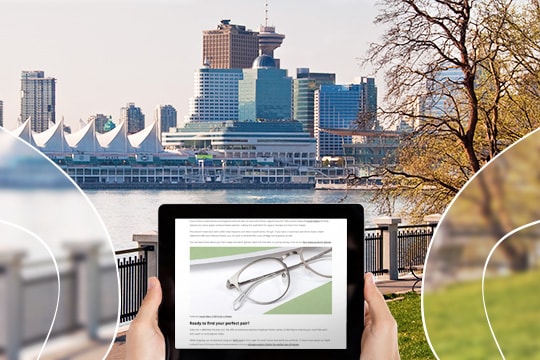
As you adapt to your progressives over time, you’ll notice that objects around you will become clearer and more focused. Here are some common things that might be obvious when trying out progressives for the first time, which will eventually become normal over time.
- You notice some blurriness on the sides.
This is sometimes called peripheral distortion because of the specific viewing zones in the lens. Try turning your head to the left or right rather than moving your eyes left or right, to avoid looking through the blurred edges.
Use your nose like a camera and point it at what you want to look at. If you’re looking at the ground, tilt your chin down slightly and it will come back into focus. This should help your depth perception.
Consider a pair of Premium Progressive glasses for the best comfort and performance and the least distortion.
- You tilt your chin up and look through the lower part of lens to see your computer monitor and read.
If you only use your computer for short periods of time, lower your monitor and/or raise your chair slightly to ensure proper neck posture.
For longer periods of time at a desktop monitor, we recommend DualView BlueReflect™ office progressives as a secondary pair.
Tips for reading with your new progressive glasses

@styledtosparkle
It’s important that you get used to your new progressive prescription for reading. The best thing you can do is be patient and practice!
Do these exercises a few times a day:
- Grab a book (or anything with text on it)
- Look straight ahead and make sure your vision is clear while looking into the distance
- Look down your lens and point your nose at the book
- Hold the book out to a comfortable reading position
- Gently move your head up and down – there should be a smooth transition through the lens
- Move the book while keeping your head still – the text will look less sharp
- Point your nose towards the book and raise your chin until the text is in focus
- Repeat these movements, keeping your nose pointed at the book
The science behind wearing progressives: How they work
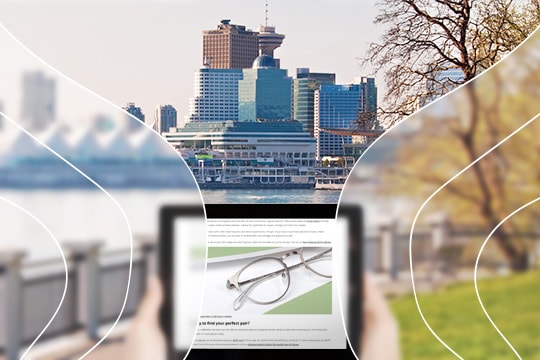
Progressive lenses are multifocal lenses that offer vision correction at all distances (near, intermediate, far, and everything in between) within one pair of glasses.
Progressives are the most advanced multifocal lens solution and have no visible line in the middle of the lens. A progressive lens ensures a smooth transition between multiple distances:
- Distance vision – a primary viewing area in the top portion of the lens
- Reading vision – a smaller area at the bottom portion of your glasses
- Intermediate vision – an even smaller area in the middle of the lens
Since these areas are combined in one lens, you’ll be able to see clearly when looking to the central corridor of the lens. One thing to note: when wearing progressive lenses, the peripheral areas can be a bit blurry.
Try our Premium Progressive lenses for less distortion on the sides.
We offer three types of progressive lenses:
- Standard Progressives – For distance, intermediate, and near vision correction (with no visible line), they are ideal for reading, driving, walking, and other everyday activities. A more budget-friendly option than Premium Progressives
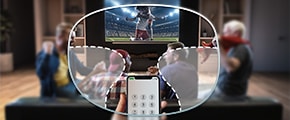
- Premium Progressives – For distance, intermediate, and near vision correction (with no visible line) and a wider field of vision (meaning less distortion), they are ideal for everyday wear and are easier to adapt to
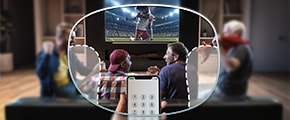
- DualView BlueReflect™ Office Progressives – For near and intermediate vision with blue light protection, they are ideal if you spend more time looking at the computer, or other objects at a similar distance

Progressive lenses vs bifocals: The difference
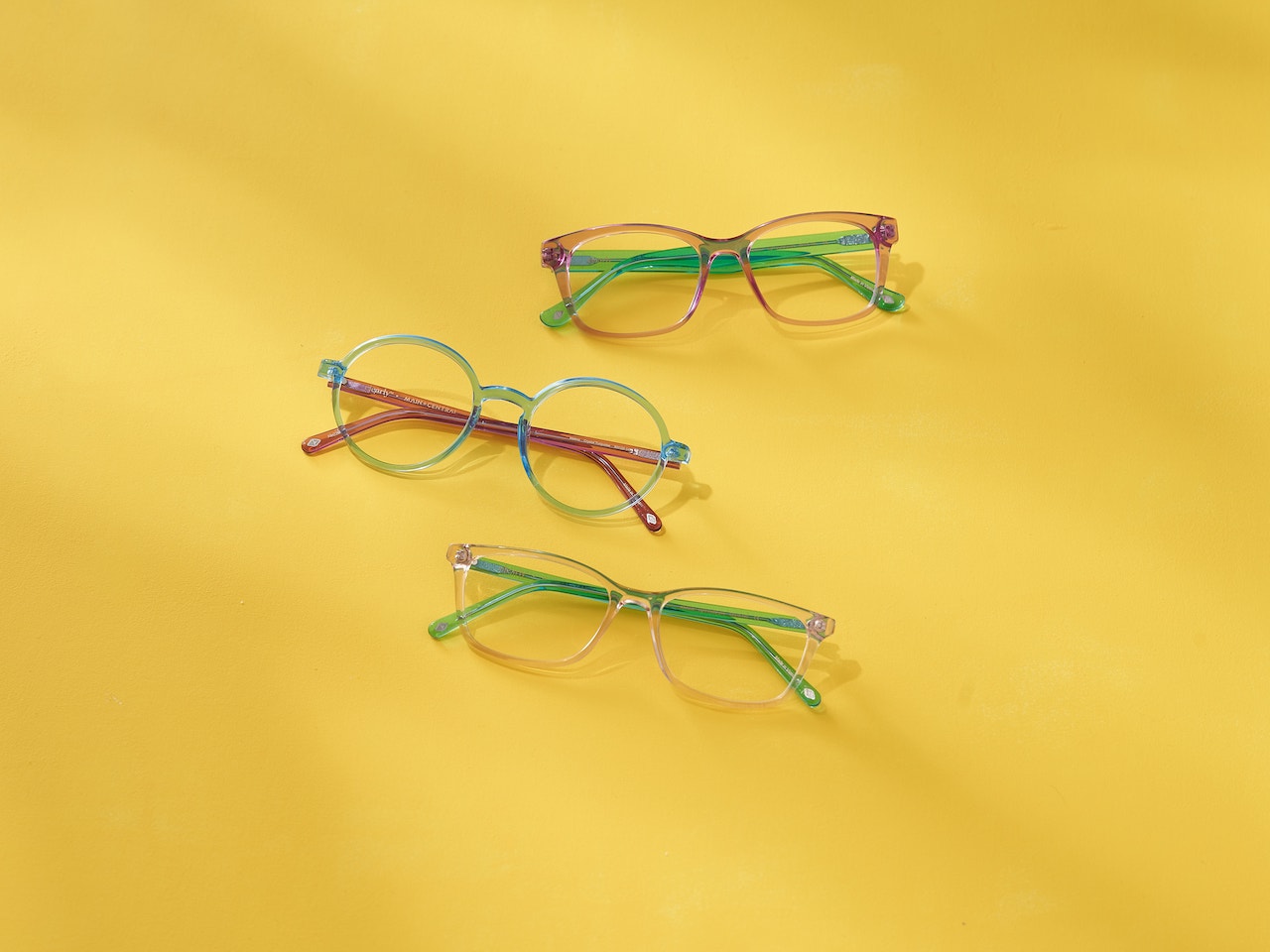
While progressives allow for near, intermediate, and far vision correction with no visible line, bifocals only allow for distance and near vision correction, and they have a visible line across the surface of the lens that divides these two fields of correction.
Depending on your vision needs and comfort level, progressives and bifocals are different multifocal lens options for people with presbyopia. You might also want to consider whether you mind having a visible line across your lenses.
Some of the reasons why most people prefer progressive lenses include:
- Being able to see at all distances (near, far, intermediate, and everything in between), unlike bifocals
- It’s the most up-to-date and high-tech multifocal lens
- Experiencing a seamless transition when you switch focus between different distances without a visible line across the lens (no one can tell you’re wearing multifocal lenses)
- They are great for everyday use, and there’s no need to switch between glasses
Bifocals are typically recommended for regular bifocal wearers or anyone who has mobility issues that make it difficult for them to tilt their head up and down, which means progressives won’t be a great fit.
Some considerations for bifocal lenses include:

- They only work at distance and elbow length (near and far), without the intermediate vision that you need to clearly see things like your car dashboard, computer screen, cooking, or grocery store aisle
- They require adaptation; the sudden change when you switch focus from near to far and vice versa causes “image jump”
- They have a visible line in the center of the lens
- They have a wide field of up-close vision
Ready to find your progressive glasses?

@wanderingwagars
With progressive glasses, your eyes can focus and enjoy clear vision at all distances in the same lens without that disruptive pause to switch between glasses.
Check out our wide selection of stylish frames for progressives. Keep your eyes peeled for the latest glasses deals and coupon codes to make your purchase even sweeter.
If it’s been a few weeks and you’re still having trouble adjusting to your new glasses, come back and see us in store or contact us by giving us a call at 1-866-414-2326.
Read more








